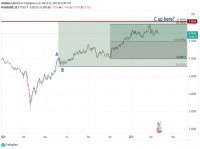
Thomas Schneeweis Opalesque Industry Update - Thomas Schneeweis, University of Massachusetts at Amherst - Isenberg School of Management, Richard Spurgin, Clark University - Graduate School of Management and Edward Szado, University of Massachusetts at Amherst - Isenberg School of Management have published a paper reviewing the performance of CTAs. The data and time dependency of empirical financial research is a common concern to both academics and practitioners. Changes in regulatory, trading and investor environments may result in dramatic changes in the underlying viability of any investment vehicle and/or trading process. This is especially true for managed futures programs for which a single commonly used database does not exist and which often are dynamic in nature and are impacted by changes in trading instruments and underlying markets. As a result, empirical analysis of the potential benefits of Managed Futures (e.g., Commodity Trading Advisors (CTAs)) may be impacted by the period of analysis and the strategy composition of the database or index used to represent the managed futures investment. In this analysis, we conduct a series of empirical tests on CTA indices which are designed to represent the overall return to the reporting universe of CTAs (e.g., composite CTA indices). These tests are similar to those previously conducted on a series of ‘composite’ hedge fund indices (Schneeweis et. al., 2012). Using major composite CTA indices as a surrogate for CTA portfolios, these tests include cross-sectional and time series analysis. Results reflect the common wisdom that performance results may be dominated by the period of analysis as well as the index and multi-factor regression model used. Are Managed Futures skill based? ….It is important to note that many managed futures strategies trade primarily in futures/option markets, which are zero-sum games. If CTAs were only trading against other CTAs, then, one may conclude that managed futures returns are based solely on manager skill. However, academics and practitioners have shown that some spot market players are willing to hedge positions even if they expect spot positions to rise or fall in their favor (e.g., currency and interest rate futures may be traded over time due to government policy to smooth price movements). Managed futures traders offer liquidity to such hedgers and obtain a positive yield (return/risk tradeoff) in return. In short, long term positive expected returns may be consistent with the underlying instruments of CTA strategies. Similarly, in option markets, differences in demand among call and put plays may also provide an excess return to risk tradeoff for individuals who are willing to provide market liquidity. In short, both academics and practitioners have often suggested that the return and risk opportunities of managed futures are available because the skill-based investment strategies employed by managers do not explicitly attempt to track a traditional stock or bond benchmark/index and managed futures traders are able to offer liquidity or make informational trades which may allow them to maximize long-term returns independent of traditional asset benchmarks. However, as discussed previously, passive algorithm-based managed futures indices exist which represent the return process of active managed futures managers (at least systematic managed futures managers). It is important, therefore, to realize that, while managed futures do not emphasize traditional stock and bond benchmark tracking, this does not mean that CTA return is based solely on manager skill. One can think of managed futures returns as a combination of manager skill and an underlying return to the managed futures strategy or investment style itself. The performance of an individual manager can be measured relative to an active manager based CTA benchmark or a passive algorithmic based investible benchmark. If a manager’s performance is measured relative to the passive algorithm-based managed futures index/benchmark, then the differential return may be viewed as the manager’s ‘alpha’ (return in excess of a similar non-manager based replicate portfolio). If a manager’s performance is measured relative to an index of other active managers, then the relative performance simply measures the over- or underperformance to that index of manager returns. Correlation Anaysis An analysis of the correlations of the three CTA composite indices with traditional market factors (S&P 500, Russell 2000, BarCap U.S.Government, and BarCap U.S. High Yield) indicate: Exhibit 4a - S&P 500 Correlation: For all three reporting CTA indices (Barclay, CISDM, and CSFB) the reported correlation patterns are similar. For most of the period of analysis the correlations were not significantly different from zero and the level of correlation varied dramatically over the period from as high as .60 to as low as -.60. Only for a short time period were the four year rolling correlations significantly negative (2002-2005) or positive (2007). Exhibit 4b - Russell 2000 Correlation: For all three reporting CTA indices (Barclay, CISDM, and CSFB) the reported correlation patterns are similar to those reported for the S&P 500. For most of the period of analysis the correlations were not significantly different from zero and the level of correlation varied dramatically over the period from as high as .60 to as low as -.40. Only for a short time period were the four year rolling correlations significantly negative (2002-2005) or positive (2007). Exhibit 4c - BarCap U.S. Gov’t Correlation: For all three reporting CTA indices (Barclay, CISDM, and CSFB) the reported correlation patterns are similar, with correlations rising for the first part of the reporting period before beginning to fall in the mid period of the analysis. However for most of the period of analysis the correlations were not significant. Exhibit 4d - BarCap U.S. Corporate High Yield Correlation: For all three reporting CTA indices (Barclay, CISDM, and CSFB) the reported correlation patterns are similar. For most of the period of analysis, the correlations are not significantly different from zero. bc |
Industry Updates
Academics' managed futures paper reviews composite CTA performance
Wednesday, February 06, 2013
|
|





 RSS
RSS







